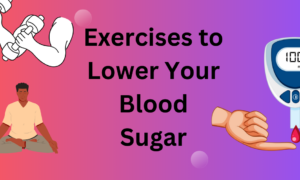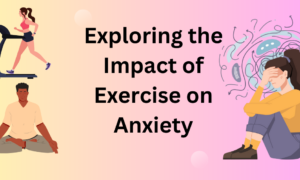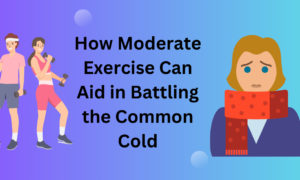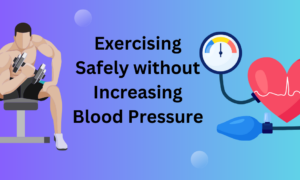Mental health struggles such as anxiety, depression, and burnout are increasingly common. While therapy and medication are traditional routes, many are discovering that exercise for mental health can be a powerful complementary solution.
The Science Behind Exercise and Mental Health
Our bodies and minds are more connected than we realize. Exercise doesn’t just build muscles; it also helps balance emotions, reduce stress, and improve cognitive clarity.
What Happens in the Brain When You Move?
Our brains release endorphins, dopamine, and serotonin, which are feel-good chemicals, when we exercise. These neurotransmitters have been associated with improved mood and a decrease in anxiety and depressive symptoms. The hippocampus, the part of the brain in charge of regulating emotion and memory, can even grow larger with regular exercise. Exercise for mental health aims to develop long-term emotional resilience rather than merely provide temporary stress relief. Numerous studies demonstrate that for some people with mild to moderate depression, regular exercise can be just as beneficial as medication.
Stress Reduction Through Movement
Physical movement naturally helps regulate the stress response. It reduces levels of cortisol (the stress hormone) and provides a healthy outlet to discharge built-up tension. Even a 15-minute walk can disrupt the cycle of negative thinking. Incorporating movement into your day can serve as an emotional reset, offering both physical release and psychological relief. That’s why more people are turning to fitness as therapy; it gives them a tool to cope with life’s pressures, both big and small.

Healing Through Movement: More Than Just Sweat
Beyond burning calories and building strength, movement can serve as a form of expression, connection, and inner healing. It’s a way to process emotions and find balance.
Movement as a Form of Self-Expression
When words fail, movement speaks. People struggling with emotional trauma or mental blocks often find healing through expressive forms of movement; whether it’s dancing, martial arts, or simply pacing while thinking. These activities offer a safe and creative way to express emotions that are hard to verbalize. Using healing through movement, individuals often rediscover parts of themselves they had suppressed or ignored. This self-awareness lays the foundation for deeper healing.
Creating Structure Through Routine
Maintaining consistency is essential for mental health. Establishing a consistent exercise routine gives a person a sense of purpose and predictability in their life. People with anxiety or depression, where disorganized routines and a lack of motivation are common, will particularly benefit from this. When fitness is viewed as therapy, people start to see movement as an anchoring ritual rather than a chore. Stretching in the morning or taking a stroll in the evening makes the structure itself therapeutic.
Reconnecting with the Body
People dealing with trauma often feel disconnected from their bodies. Gentle forms of exercise like yoga, tai chi, or mindful walking help reestablish that lost connection. These practices focus on body awareness and breathing, which promotes calmness and a grounded sense of self. Over time, such mindful movement becomes a bridge to emotional recovery; a clear example of healing through movement.
Types of Exercise and Their Mental Health Benefits
Different forms of movement offer different emotional benefits. From cardio to strength training to meditative exercise, each has its place in supporting mental wellness.
Aerobic Exercise: Lifting the Mood
Aerobic exercise; running, biking, dancing, or swimming; helps release endorphins and promotes better sleep. It increases oxygen flow to the brain and supports the regulation of neurotransmitters, leading to improved mood. Incorporating aerobic exercise for mental health is especially effective in managing stress, reducing fatigue, and supporting brain health. Just 20–30 minutes of activity, a few times a week, can bring significant results over time.
Strength Training: Building Resilience Inside and Out
Although bodyweight training and weightlifting may seem daunting, they do more than just increase muscle mass. This type of exercise increases mental toughness, focus, and determination. Confidence grows with each successful repetition. Individuals who use strength training as a form of fitness therapy often report feeling more confident and in control of their lives, which is a significant psychological change when coping with anxiety or depression.
Mind-Body Practices: Embracing Calm and Awareness
Mindful movement like yoga, tai chi, or Pilates focuses on the connection between breath, posture, and presence. These exercises are ideal for reducing anxiety, calming the nervous system, and promoting mindfulness. Such practices are especially effective for individuals navigating trauma, grief, or chronic stress. These slow-paced, intentional movements promote healing through movement by helping individuals stay present and regulate their emotions.
Outdoor Activities: Nature as a Natural Healer
Exercising outdoors adds another layer of benefit. Sunshine, fresh air, and natural scenery work in tandem with physical activity to support emotional well-being. Hiking, beach walks, or even gardening combine fitness as therapy with nature therapy, reducing symptoms of seasonal depression and creating a sense of connection beyond oneself.
Using Exercise as a Complementary Therapy
While movement is powerful, it becomes even more effective when paired with other support systems like therapy, medication, or mindfulness techniques.
Pairing Movement with Traditional Mental Health Treatments
Exercise should be seen as an additional tool, not a substitute for expert assistance. In order to boost the benefits of talk therapy and enhance emotional regulation, therapists often suggest exercise for mental health. Incorporating physical activity into treatment for anxiety or depression may result in a quicker recovery and a lower need for medication. It produces a cycle of positive effects on the mind and body.
Working with a Professional
Those new to exercise or struggling with specific conditions should consider working with a fitness coach or therapist who understands the therapeutic aspect of movement. There are now mental health professionals trained in somatic therapy; blending movement and psychology. This makes healing through movement accessible for people of all fitness levels and life stages. You don’t need to run marathons; just consistent, mindful movement tailored to your needs.

Overcoming Barriers to Movement
Many people know that exercise helps with stress or sadness; but still struggle to get started. Understanding common barriers and how to overcome them is part of making fitness more accessible.
What If I Don’t Like to Exercise?
Not everyone enjoys gyms or traditional workouts, and that’s perfectly fine. Movement can be playful, social, or relaxing. Dancing in your kitchen, walking your pet, or stretching while watching TV all count. When people shift their mindset from “I must work out” to “I get to move,” they unlock the joy that makes fitness as therapy sustainable. The activity itself should feel nourishing, not punishing.
Managing Low Motivation and Emotional Resistance
Motivation and vitality can often be diminished by depression and anxiety. It can be difficult to get out of bed on bad days. It’s crucial to begin small. It’s a victory to walk around the block or do a 5-minute stretch. Little things add up. The aim of exercise for mental health is progress, no matter how slowly; it is not perfection. Appreciate each effort and allow yourself to start over repeatedly.
Stories of Transformation Through Movement
Real-life experiences illustrate just how transformative movement can be. For many, physical activity has been the gateway to emotional healing, confidence, and renewed purpose. People with PTSD, grief, or chronic anxiety often report that movement gave them the first glimpse of hope. Whether it’s a retired veteran finding solace in yoga, a teen regaining confidence through strength training, or a mother rediscovering herself through hiking; healing through movement becomes a personal story of resilience. These aren’t extreme fitness tales; they are quiet, consistent, and profoundly meaningful transformations that remind us how deeply connected our mind and body truly are.
Conclusion
Movement is about more than just being physically fit; it’s also about finding joy in movement, reestablishing our connection to ourselves, and controlling our emotions. When we approach fitness as therapy, we create opportunities for healing, clarity, and emotional development. Exercise for mental health can be a significant change in your routine, regardless of whether you’re dealing with anxiety, trying to recover from a depressive episode, or just looking for emotional balance.
It’s more important to focus on the freedom movement provides to your mind than on how far you run or how much weight you lift. Sometimes the most restorative thing we can do in a noisy world is to move. One breath, one step, one stretch at a time.





















